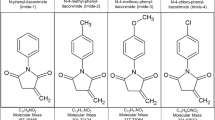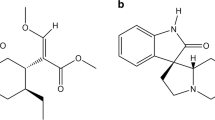Abstract.
The present study was aimed to elucidate the cellular pathway(s) controlling vascular relaxation triggered by stimulation of prostaglandin I2 (PGI2, IP) receptor with a stable PGI2 analog, beraprost. Beraprost caused a concentration-dependent relaxation in de-endothelialized guinea-pig aorta contracted with prostaglandin F2 α (PGF2 α). Beraprost-induced relaxation was almost abolished in high-KCl-contracted tissue, indicating a major role of K+ conductances. In contrast to other PGI2 analogs (e.g. cicaprost and iloprost), beraprost-induced relaxation was practically abolished by a selective voltage and Ca2+-activated K+ (MaxiK, BK) channel blocker Iberiotoxin (10–7 M) or by tetraethylammonium (2×10–3 M). The relaxation induced by beraprost was not significantly affected by other K+ channel blockers glibenclamide (10–6 M) or Ba2+ (10–5 M), but was slightly attenuated by 4-aminopyridine (10–4 M). Beraprost increased intracellular cyclic AMP levels, suggesting a role for cyclic AMP-dependent pathways. A selective inhibitor of cyclic AMP-specific phosphodiesterase, RO-20-1724 (10–4 M), significantly potentiated beraprost-induced relaxation. Iberiotoxin (10–7 M) completely counteracted this potentiation. Moreover, tension decrement due to forskolin (3×10–7 M) or 8-bromo-cyclic AMP (10–2 M) was thoroughly restored by Iberiotoxin (10–7 M), confirming a role for a cyclic AMP-dependent mechanism. However, SQ 22,536 (10–4 M), an adenylyl cyclase inhibitor, did not affect beraprost-induced relaxation though it almost totally inhibited the elevation of cyclic AMP contents induced by beraprost, suggesting the existence of an additional mechanism that is cyclic AMP-independent. Moreover, cholera toxin (CTX, 1 µg/ml for 6 h), which activates the stimulatory G protein of adenylyl cyclase (Gs), significantly suppressed PGF2 α-induced contraction both in the absence and presence of SQ 22,536 (10–4 M). Iberiotoxin (10–7 M) was also capable of restoring the relaxation induced by CTX. These findings suggest that MaxiK channel plays a primary role in mediating smooth muscle relaxation following stimulation of IP receptor with beraprost in guinea-pig aorta. Both cyclic AMP-dependent and -independent pathways contribute to the MaxiK channel-mediated relaxation following IP receptor stimulation in this vascular tissue. Direct regulation of MaxiK channels by Gs may partly account for the cyclic AMP-independent relaxant mechanism.
Similar content being viewed by others
Author information
Authors and Affiliations
Additional information
Electronic Publication
Rights and permissions
About this article
Cite this article
Yamaki, F., Kaga, M., Horinouchi, T. et al. MaxiK channel-mediated relaxation of guinea-pig aorta following stimulation of IP receptor with beraprost via cyclic AMP-dependent and -independent mechanisms. Naunyn-Schmied Arch Pharmacol 364, 538–550 (2001). https://doi.org/10.1007/s002100100485
Received:
Accepted:
Published:
Issue Date:
DOI: https://doi.org/10.1007/s002100100485




